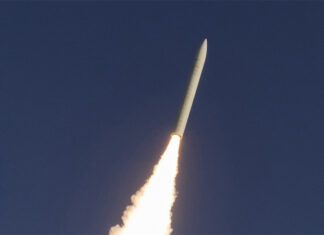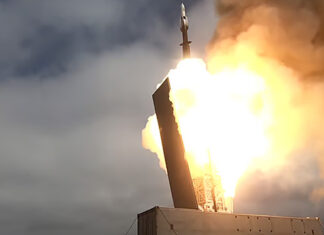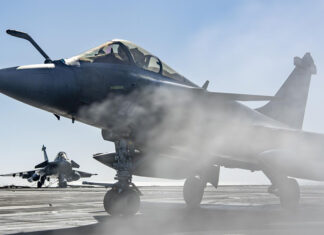
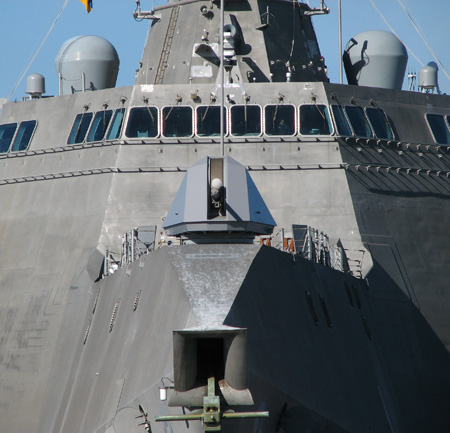
The US Navy wants its Littoral Combat Ships to be better armed and survivable. Consistent with the Fleet’s views of the future small surface combatant (SSC), a future combat vessel to provide multi-mission anti-surface warfare (SUW) and anti-submarine warfare capabilities (ASW), as well as continuous and effective air, surface and underwater self-defense. The enhanced capabilities are required by the Navy to meet estimated theater threat environment for the 2025 time frame.
Before leaving office, outgoing Secretary of Defense Chuck Hagel has directed the Navy “to move forward with a multi-mission SSC based on modified Littoral Combat Ship (LCS) hull designs.” The decision rules out other choices previously considered, that included several new frigate size designs. However, the decision does not say which of the two LCS classes should be selected for the SSC.
Based on the Littoral Combat Ship (LCS), the small surface combatant (SSC) will be more lethal and survivable
The planned enhancements will be provided to 20 vessels that will complement the baseline configured LCS currently in production. Some of the vessels currently in production will receive some of the improvements as well.
The LCS vessels (available in Freedom and Independence classes) are currently armed with relatively light armament that consists of the 57mm gun and SeaRAM missile system. The 0+ baseline configurations, will be equipped with a weapon complement typically used on frigate size ships – over-the-horizon surface-to-surface missiles. The type is yet to be specified but is likely to enable both anti ship and land attack capabilities, thus significantly extending the current missile range of the LCS, limited by the Hellfire’s 8km. Air defense upgrades are also considered, but these will be limited to minor improvements to part of the vessels and enhancement of sensors and radar capability, which will also be augmented by more capable and advanced electronic warfare (EW) system; advanced decoys; a towed array system for submarine detection and torpedo defense. In addition, the ship will also get two 25mm Mk38 Mod2 remotely controlled turrets in addition to the 30mm guns currently installed. The armed MH-60 helicopter is also part of the weapons suite on board, capable of engaging targets with either Hellfire missiles or MK-54 torpedoes. The unmanned MQ-8B FireScout helicopter will be used for surveillance, reconnaissance, and targeting.
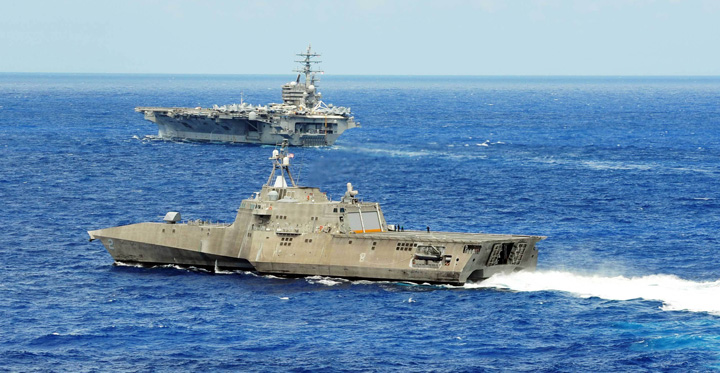
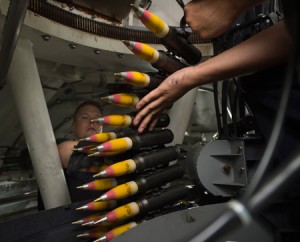
Modularity design features will also be retained to augment SUW and ASW capabilities as directed by the Fleet Commanders. Available mission modules include Longbow Surface to-Surface Missiles (Hellfire), two MK46 30mm guns, and two 11M RHIBs for Surface Warfare, or a variable depth sonar for submarine warfare which, when added to the ship’s organic multi-function towed array and embarked helicopter, make this an extremely effective anti-submarine warfare platform.
Absent from the new concept is a significant air defense capability, since the Navy’s current vertical launch system is not suitable for these ships. However, Navy officials said the SSC would be able to operate independently, outside the coverage of other air-defense ships. The current LCS is protected by the short range Rolling Airframe Missile (SeaRAM).
In addition to the improved weapon systems capabilities for this ship, which reduce its susceptibility to being hit by a threat weapon, the small surface combatant will also include improved passive measures – measures that will reduce the ship’s signature against mine threats, and measures that will harden certain vital spaces and systems against potential damage caused by weapon impact – to further enhance its overall survivability.

From an operational perspective, the sum of these improvements will increase the ship’s capability and availability to participate in SUW Surface Action Groups, ASW Search and Attack Units; escort of High Value Units, and support of Carrier Strike Group (CSG) SUW and ASW operations.
With increased lethality and survivability, the modified LCS will provide the flexibility to operate both independently and as a part of an aggregated force. This decision allows the Navy to add organic multi-mission capabilities to the small surface combatant force while leveraging the benefits and affordability of the LCS program.

Lockheed Martin and Austal USA, builders of the current LCSs have already submitted SSC proposals to the Navy, both are based on more powerful versions of their current designs. Due to the commonality with existing designs the increased multi-mission capability could be achieved at less than 20% more cost than the current LCS, Navy sources noted.
The modified LCS ships will complement the planned 32 LCS ships, resulting in a 52 ship Small Surface Combatant Fleet in keeping with the Navy’s Force Structure Analysis. The baseline 32 LCS ships will retain their full modular capability, while the later 20 will be able to carry modules but will have more systems permanently installed on board. Both versions will allow the Navy to deploy assets to meet the Navy’s mine warfare, SUW, and ASW demands.





